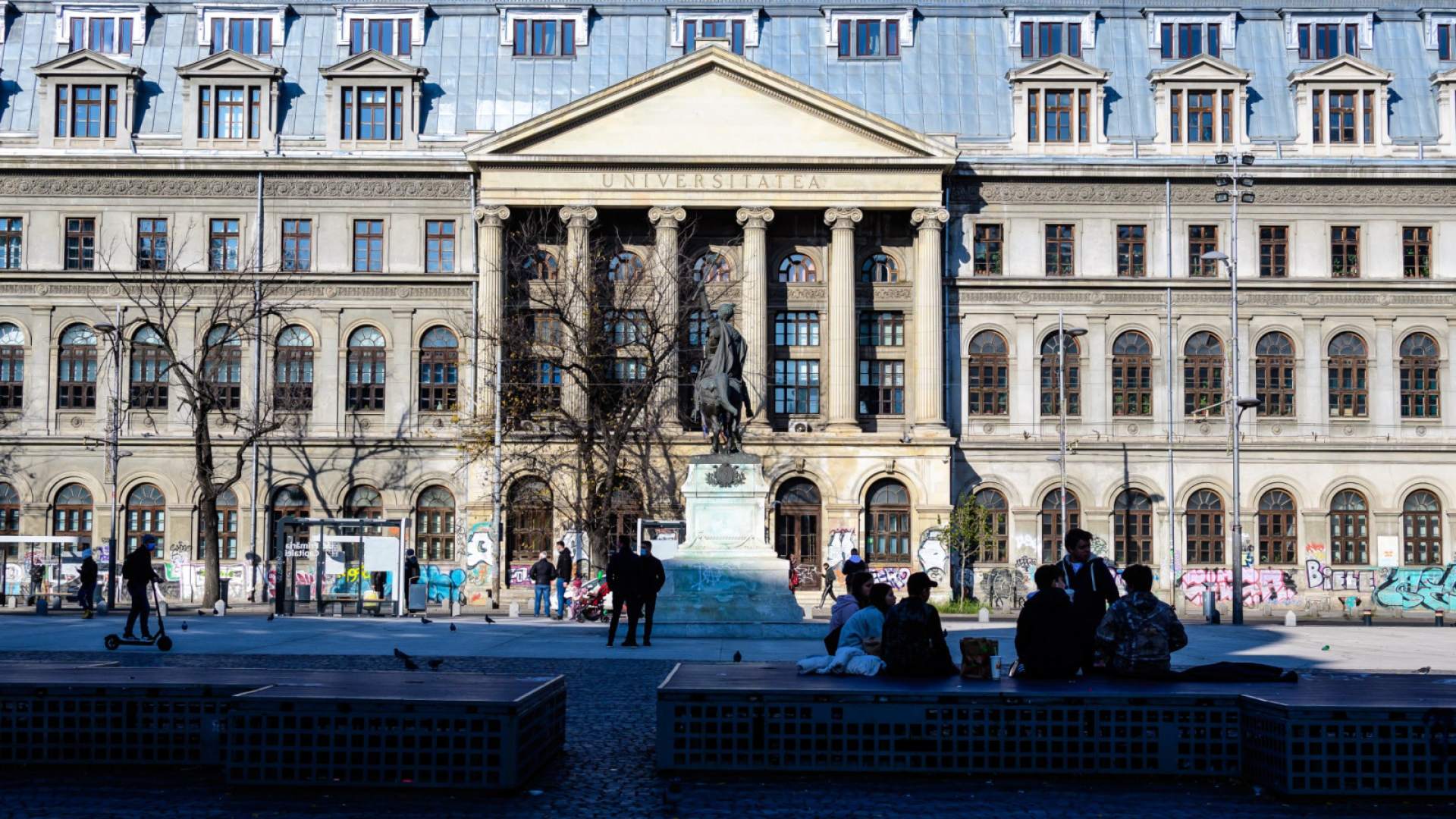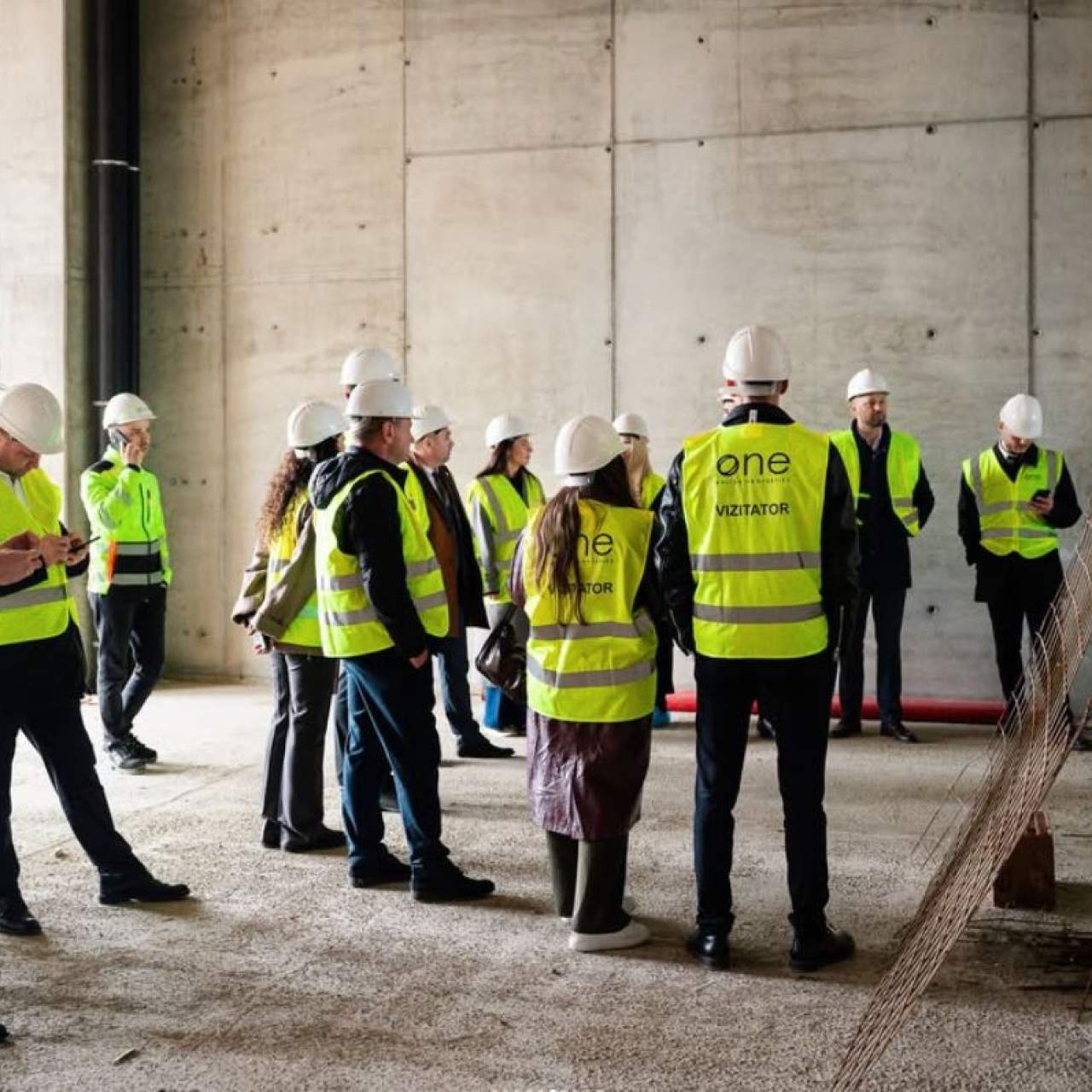
Bucharest universities with tradition
Boasting distinguished professors and notable graduates, the universities with tradition in Bucharest are the places where countless artists, scholars, writers, politicians, and more have received their academic training.
What history precedes them?
The University of Bucharest
In 1864, four years after the founding of the University of Iași, the country's second modern university was established in Bucharest: The University of Bucharest. Long before that, however, in 1694, at the request of ruler Constantin Brâncoveanu, the Royal Academy of Bucharest had been opened, with teaching in ancient Greek and the courses held on the premises of the Saint Sava monastery. From this was born, in 1832, the College of Saint Sava, divided in 1864 by ruler Alexandru Ioan Cuza into two individual entities: the University of Bucharest and the National College of Saint Sava. The first three faculties that operated within the new institution were the Faculty of Law, Science, and Letters. During the communist regime, several faculties were abolished, so at the time of the 1989 Revolution, the University was operating with only six faculties. Currently, the institution operates with 19 faculties offering 97 bachelor's programs in 32 fields, while also having 215 master's and 22 doctoral programs. The Museum of the University of Bucharest also runs here.
Polytechnic University
The Polytechnic University of Bucharest has its origins in 1818, when Gheorghe Lazăr inaugurated the Higher Technical School with teaching in the Romanian language, also within the Saint Sava monastery in the city. Later, in 1864, following an order issued by ruler Alexandru Ioan Cuza, the School of Bridges and Roads, Mines, and Architecture began its activities. Over time, the name of the institution went through numerous transformations, the current one being adopted in the fall of 1992. From four sections (Construction, Electromechanics, Mines and Metallurgy, and Industrial Chemistry) with which it operated in 1920 when it received for the first time the title of Polytechnic School, and from four faculties (Mechanics, Electrotechnics, Industrial Chemistry, and Textiles) as it had in 1948, when it became the Polytechnic Institute of Bucharest, the university has now reached a total of 15 faculties, along with two technical university colleges and nine departments. It is, moreover, the largest technical university in the country. The Polytechnic University Museum of Bucharest, inaugurated in 2003, also operates under the same roof.
Academy of Economic Studies (ASE)
Following a Royal Decree issue, the Academy of Higher Commercial and Industrial Studies was born on April 6, 1913. Its name was changed in 1947, when it merged with the Academy of Cooperative Studies into the Academy of Commercial and Cooperative Studies. After other name changes, it took over the current name in 1967, at that time operating with six faculties. Since then, their number has expanded to 13, along with which 23 research centres and eight student associations have been opened. An important milestone in the history of the institution was reached in 1921 when it was granted the right to organize doctorates; currently, there are ten doctoral programs, 90 master's programs, and 36 bachelor's programs. Nicolae Iorga and Virgil Madgearu are among the illustrious professors who sat in the institution's chairs.
"Ion Mincu" University of Architecture and Urbanism
The current University of Architecture and Urbanism "Ion Mincu" was also born on the foundations laid with the establishment of the School of Bridges and Roads, Mines, and Architecture. Over the decades of activity, it has operated under various names, including the School of Architecture of the Society of Romanian Architects, the National School of Architecture, the Higher School of Architecture, and the Academy of Architecture. For a while, starting in 1938, the institution operated within the same body as the Faculty of Architecture, with the Polytechnic gaining its independence, which it only managed to keep for one year following the education reform of 1948. In 1952, it would gain independence again, this time breaking away from the Construction Institute, under whose roof it had been integrated, and in 1953 it would adopt the name of the architect Ion Mincu. The current title, University of Architecture and Urbanism, was adopted in 2000.
National School of Political and Administrative Studies (SNSPA)
With a more recent history, the National School of Political and Administrative Studies (SNSPA) remains one of the most sought-after university and postgraduate institutions not only in Bucharest but also in the country. Founded in 1991, following the model of other institutions with a similar profile in Western Europe, SNSPA offers ten undergraduate study programs, 58 master's programs, and five doctoral fields.
Other institutions
Without offering an exhaustive list, other prestigious universities in Bucharest are the University of Agronomic Sciences and Veterinary Medicine in Bucharest, which opened in 1852, following efforts by the Romanian engineer Petrache Poenaru; The "Carol Davila" University of Medicine and Pharmacy, inaugurated in 1857, where Nicolae Paulescu would isolate for the first time insulin, in 1921, following other medical innovations by Romanian scientists; The National University of Arts, established in 1864 as the National School of Fine Arts by a decree issued by the ruler Al. Ioan Cuza, as a result of the efforts undertaken by the painters Theodor Aman and Gheorghe Tattarescu; the National University of Music Bucharest (N.M.B.), also known as the Ciprian Porumbescu Conservatory, opened to the public in the same year, and the "Ion Luca Caragiale" National University of Theatre and Cinematography (UNATC), which opened its doors in 1954.
Data for this article was obtained from unibuc.ro, upb.ro, uauim.ro, snspa.ro and wikipedia.org.
Inspired by the article?
Explore apartments in neighborhoods worth discovering:


